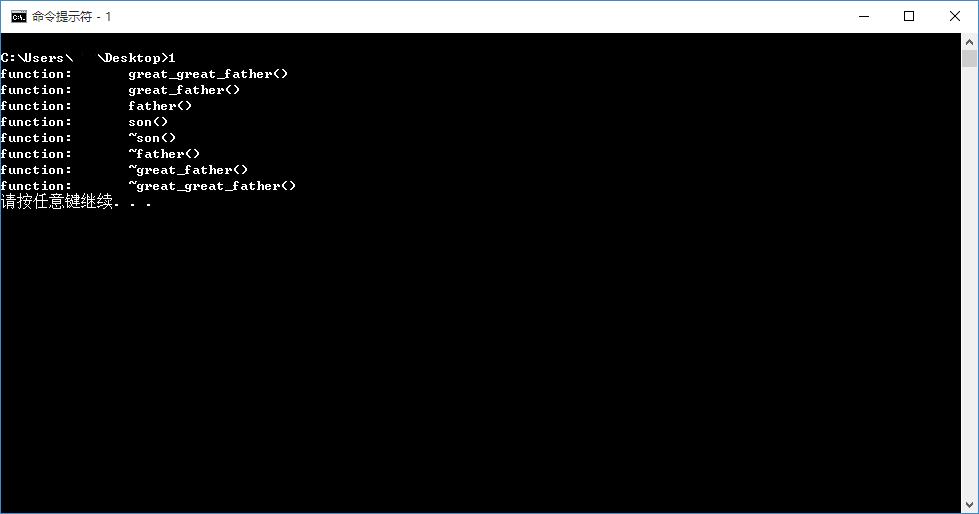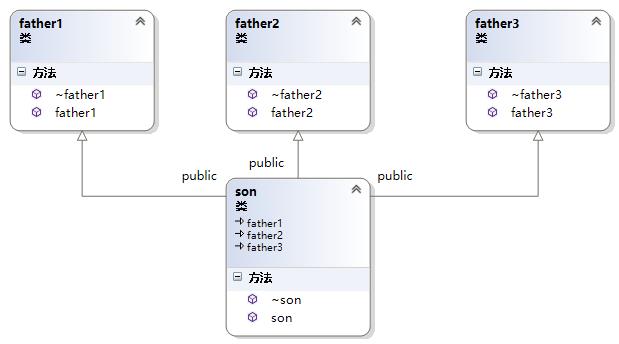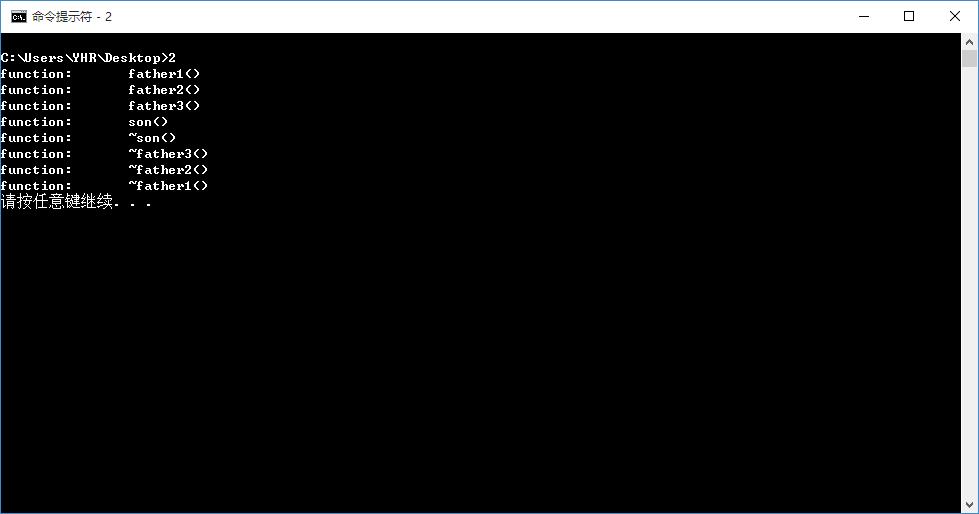单一继承多次与多重继承的构造与析构
Posted Sing
tags:
篇首语:本文由小常识网(cha138.com)小编为大家整理,主要介绍了单一继承多次与多重继承的构造与析构相关的知识,希望对你有一定的参考价值。
单一继承多次
代码:
class great_great_father { public: great_great_father() { cout << "function: \tgreat_great_father()" << std::endl; } ~great_great_father() { cout << "function: \t~great_great_father()" << std::endl; } }; class great_father : public great_great_father { public: great_father() { cout << "function: \tgreat_father()" << std::endl; } ~great_father() { cout << "function: \t~great_father()" << std::endl; } }; class father : public great_father { public: father() { cout << "function: \tfather()" << std::endl; } ~father() { cout << "function: \t~father()" << std::endl; } }; class son : public father { public: son() { cout << "function: \tson()" << std::endl; } ~son() { cout << "function: \t~son()" << std::endl; } }; int main(int argc, char *argv[]) { { son s; } system("pause"); return 0; }
son s;语句放在代码块里,使得析构放在主函数结束前。
类图如下

运行结果:

多重继承
代码:
class father1 { public: father1() { cout << "function: \tfather1()" << std::endl; } ~father1() { cout << "function: \t~father1()" << std::endl; } }; class father2 { public: father2() { cout << "function: \tfather2()" << std::endl; } ~father2() { cout << "function: \t~father2()" << std::endl; } }; class father3 { public: father3() { cout << "function: \tfather3()" << std::endl; } ~father3() { cout << "function: \t~father3()" << std::endl; } }; class son : public father1, public father2, public father3 { public: son() { cout << "function: \tson()" << std::endl; } ~son() { cout << "function: \t~son()" << std::endl; } }; int main(int argc, char *argv[]) { { son s; } system("pause"); return 0; }
类图:

运行结果:

编译器:Visual Studio 2015 -> cl.exe
实践很有意思!
以上是关于单一继承多次与多重继承的构造与析构的主要内容,如果未能解决你的问题,请参考以下文章